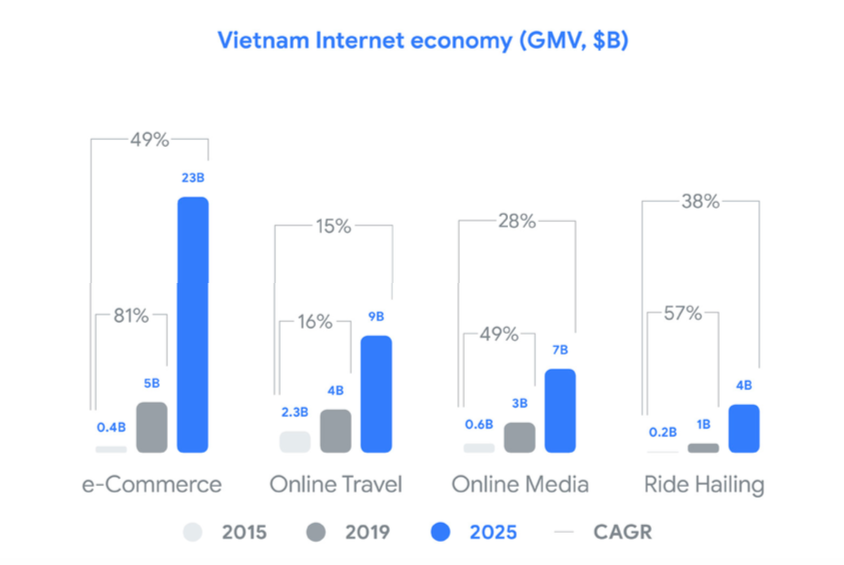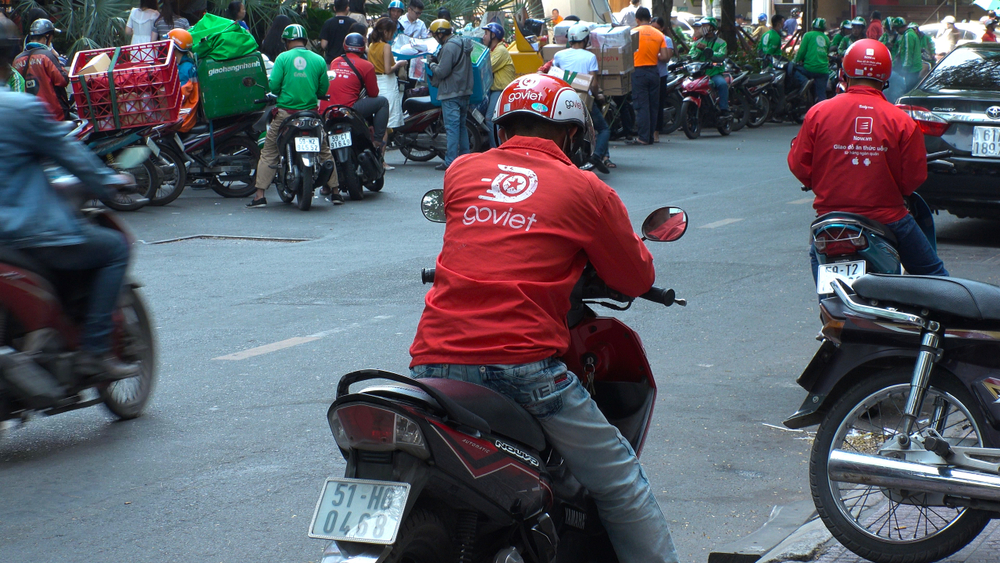As September came to an end, ride-hailing app Gojek launched a video-streaming platform called GoPlay in Indonesia, adding yet another dimension to its ecosystem of more than 22 services in its home market, ranging from food delivery to cashless payments and any on-demand service you can think of, even massages or manicures.
Gojek, Grab’s closest rival, spent years solidifying its position in Indonesia before venturing abroad. It now has active operations in Singapore, Thailand, and Vietnam. But especially in the latter country, which it entered in 2018 following Uber’s exit, Gojek has had a tumultuous ride.
The same month that Gojek launched GoPlay in Indonesia to some fanfare, Le Diep Kieu Trang (Christy Le), the CEO of Gojek’s Vietnamese subsidiary Go-Viet, announced she was stepping down.
Her tenure had lasted only five months, despite high expectations. The experienced entrepreneur had been Facebook’s country director in Vietnam prior to joining Go-Viet and is well-regarded in the Vietnamese tech and entrepreneurship community.
There was hope she could turn the page for Go-Viet, whose super-app ambition has yet to materialize in Vietnam. The platform now only has three basic services: Go-Bike, Go-Send and Go-Food, with both Go-Pay (cashless payments) and Go-Car (four-wheeled rides as opposed to motorcycle taxis) still crucially missing in its ecosystem.
The CEO before Trang, Nguyen Vu Duc had left the post in March, just six months after he started. He’d held a key role in setting up Gojek’s launch in Vietnam in August 2018 as Go-Viet. Duc was also briefly part of the team that helped launch Uber in Vietnam back in 2014. In March, Duc and another Go-Viet executive reportedly quit (although Go-Viet insists they had simply switched to different roles at that time).
With these teething problems to overcome, can Go-Viet keep up in this battleground of more than 96 million people?
Tough nut to crack
According to the recently-released Google-Temasek-Bain report on Southeast Asia’s digital economy, Vietnam’s ride-hailing sector is expected to worth USD 4 billion by 2025, growing at an average rate of 38%.

But it’s no longer an easy one to crack. Grab and Uber had a first-mover advantage when they entered the country in 2014. Commuters in most of Vietnam’s major cities have gotten used to arranging rides in cars, taxis, and motorbikes using their smartphones, which is much more transparent and cost-effective.
Until its exit from Southeast Asia in April 2018, Uber had about 6,000 cars registered on its platform. It served millions of riders in Vietnam. Uber’s departure gave Grab the opportunity to pull ahead of regional competition. Gojek’s late entrance in Vietnam in 2018 came at a time when Grab had already consolidated its position in Vietnam, covering 43 provinces and cities.
However, riders have also gotten used to discounted rides, which means that for ride-hailing startups to stay competitive they must be willing to engage in what’s become known as “cash-burning” operations to sustain this battle. In August, Go-Viet marked its one year anniversary in Vietnam. It claimed then that it has served more than 100 million rides in the country. However, recent ABI research showed that Grab has a 72.9% market share in terms of the ride volume in Vietnam, while Go-Viet only holds 10.3%. A slew of local ride-hailing apps have also popped up, such as FastGo, Be, MyGo and Vato.

Go-Viet, which started off with motorcycle rides only, was expected to start Go-Car services a few months after its entrance but then failed to do so. In an interview with KrASIA two weeks before her departure, former CEO Trang agreed that Go-Viet has to roll out more services in the future in Vietnam but avoided referring to a timeline or offering reasons behind the delay. Both local providers FastGo and Be offer car-based transportation, and FastGo even launched helicopter rides.
Go-Viet has also been slow in adapting to the cashless movement in Vietnam while Grab’s partnership with local e-wallet Moca drove both sides to new heights and was key in extending Grab’s dominance in Vietnam. In a market that has been crowded with e-wallet providers rushing to get a pie of Vietnam’s fintech boom, Go-Viet’s cash-only option isn’t helping to propel it forward.
One strength Go-Viet has touted is its food delivery expertise. In August, Go-Viet claimed that it was leading Vietnam’s online food delivery market in terms of the number of merchants and menu items, with 70,000 merchants on its platform and 1 million menu items on offer, with a monthly growth of 25% to 35% in the number of orders.
While the numbers sound encouraging, Go-Viet has only able to roll out Go-Food in Hanoi and Ho Chi Minh City so far, while both strong competitors GrabFood and Now.vn (owned by SEA) have been operating in more than 15 cities in Vietnam. Grab’s recent launch of GrabKitchen in Vietnam also will pose more challenges to Go-Food to win over customers and merchants.
More hurdles to overcome
Go-Viet’s internal leadership structure has been shaken up twice this year. And more hurdles await the next leader to take the hot seat. Despite much debate and pushback from ride-hailing companies and other industry players, Vietnamese authorities are still looking to enforce taxi-style roof sign requirements on ride-hailing cars and subject ride-hailing companies to the same requirements as taxi firms.
In order to enable cashless payments on Go-Viet, the firm’s best option would be follow Grab’s footstep in securing a partnership with a licensed local e-wallet provider. Even this can be challenging now as Vietnam’s e-wallet market has seen some merger and acquisition activities amid fierce competition: VinID acquired MonPay; e-wallets Vimo and mPOS merged to form NextPay and other major players such as VNPAY and Momo are among the region’s top-funded fintech companies already, giving them less incentives to be integrated onto Gojek’s platform in Vietnam.
Speaking to KrASIA, a spokeswoman from Gojek said that the firm is confident “the existing management team in Vietnam, supported by the knowledge and expertise of our international team, will ensure GoViet continues to create a positive impact and extend the exponential growth we’ve seen over the past year.”
“In a region as diverse as Southeast Asia, our focus is on how best we can tailor our solutions to meet the unique needs and challenges of each market, while replicating Gojek’s ecosystem model that has achieved success in Indonesia,” she said.
Local insiders are waiting to see whether the next person at Go-Viet’s helm will be able to steer the course in the right direction in Vietnam, a market that Gojek cannot afford to lose as coincidentally, Vietnam and Indonesia are considered the pacesetters for Southeast Asia’s internet economy.
Additional reporting by Cindy Silviana in Jakarta, Indonesia.
